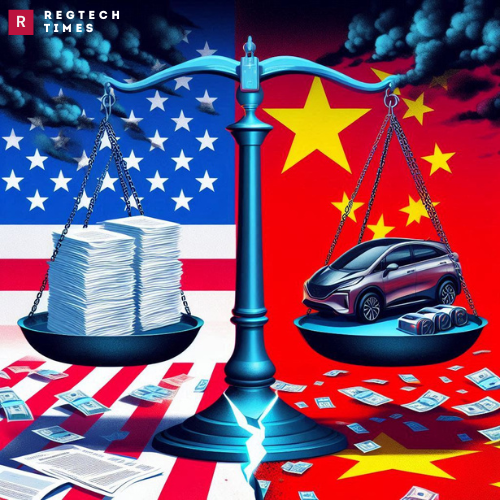Trade tensions between the United States and China are intensifying, marking a significant strain in the relationship between the world’s two largest economies. Recently, China has called on the U.S. to lift sanctions imposed on Chinese companies, highlighting the growing friction in their trade dealings. These sanctions include tariffs and restrictions that make it more challenging and costly for Chinese products to enter the U.S. market.
The Chinese government argues that these measures are harmful to both nations’ economies and disrupt global supply chains, which are essential for the smooth production and distribution of goods worldwide. By urging the U.S. to remove these sanctions, China hopes to ease the trade tensions and foster a more cooperative economic environment.
This development comes at a critical time, as the United States approaches its presidential elections in November. With both major political parties in the U.S. advocating for a strong stance against China, the trade tensions are likely to remain a hot topic in the political arena. The ongoing disputes reflect deeper issues in the economic relationship between the two countries, including competition over technology and market access.
Tariffs and Technology Restrictions Fuel Trade Tensions
A central element of the current trade tensions is the series of tariffs the U.S. has placed on a wide range of Chinese goods. Over the past few years, the U.S. has imposed tariffs on approximately $300 billion worth of Chinese goods. Recently, new tariffs targeting electric vehicles, batteries, and solar panels have been added, affecting an additional $18 billion in products.
In addition to tariffs, the U.S. has implemented strict technology restrictions aimed at limiting China’s access to advanced technologies. These restrictions include bans on the sale of semiconductors and the machinery used to produce them, as well as plans to prohibit the sale of connected vehicles that incorporate Chinese and Russian technology. The U.S. government justifies these measures by citing national security concerns, arguing that advanced technologies could be used for military purposes if they fall into the wrong hands.
Nvidia’s H20 Chips: A Catalyst for China’s Push for Domestic Solutions
China has strongly opposed these technology restrictions, labeling them as unfair and protectionist. The Chinese Commerce Ministry has expressed serious concerns about the U.S. semiconductor policies and the restrictions on network-connected cars. By raising these issues, China is seeking to challenge the U.S. stance and push for a more balanced approach to trade and technology exchanges.
Political Maneuvering and Future of Trade Tensions
The timing of these escalating trade tensions is particularly significant as the U.S. prepares for its upcoming presidential elections. Both Democrats and Republicans are maintaining a tough stance on China, emphasizing the need to protect American industries and national security. This bipartisan agreement highlights the depth of the trade tensions and suggests that they may persist regardless of the election outcome.
President Biden has continued many of the tariffs initiated by his predecessor, signaling a continuation of the current trade policy towards China. The administration argues that these tariffs are necessary to address unfair trade practices and protect key industries from foreign competition. However, China remains steadfast in its opposition, calling the tariffs protectionist and detrimental to bilateral relations.
Amid these tensions, both countries have agreed to keep communication channels open in an effort to manage the dispute. While China has expressed a willingness to return trade relations to a more stable and cooperative path, the U.S. has emphasized that national security concerns are non-negotiable. This delicate balance highlights the complexity of the trade tensions, where economic interests and security considerations intersect.
The ongoing trade tensions between the U.S. and China have significant implications for global trade and the international economy. As both nations navigate their economic policies and political agendas, the outcome of this trade dispute will likely influence global supply chains, market dynamics, and international relations for years to come.


